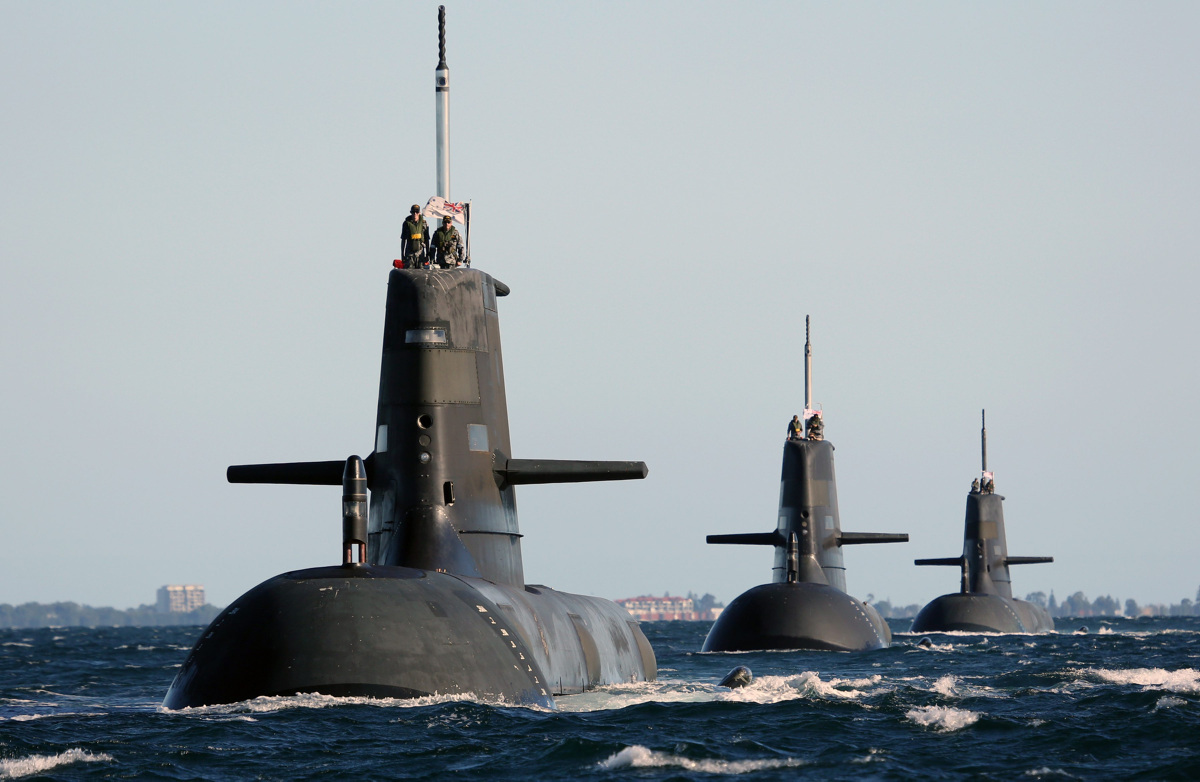
The 2016 Defence White Paper stated that the nine new future frigates will be ‘optimised for anti-submarine warfare’. According to the Turnbull government, they will be ‘one of the world’s most advanced anti-submarine warfare frigates’. It stands to reason, hopefully, that for $35 billion the government is addressing a serious submarine threat to Australia.
There has been a significant increase in interest in submarine acquisition in Southeast Asia. Vietnam has purchased six Kilo-class submarines from Russia. Indonesia is adding three Korean-built submarines to its inventory of two upgraded Type 209 Cakra class. Two German-built submarines have been ordered to supplement Singapore’s existing fleet of four. Thailand will buy three Chinese Yuan-class vessels, and Myanmar has indicated an interest in gaining a submarine capability. Malaysia has long-term plans to double its current submarine numbers to four by 2040.
The white paper predicts that ‘[w]ithin the broader Indo-Pacific region, in the next two decades, half of the world’s submarines will be operating in the region’ and ‘[b]y 2020 China’s submarine force is likely to grow to more than 70 submarines’. India currently operates 14 submarines. This is likely the real strategic issue.
Sound practice in force structuring is not to rely on being able to guess the future intentions of neighbouring states—circumstances and politics change, and over time allies can become friends and vice versa—but to look at the possible forces that could be arrayed against national interests. Taking a narrow view and just focusing on the burgeoning interest in submarines in Australia’s near region, it’s easy to appreciate that a threat from submarines is not totally negligible.
But given the additional factor of constrained resources, governments have to allocate a priority to confronting the submarine threat relative to other strategic challenges. In addition, within that constraint, a decision is required on how much anti-submarine warfare capability is enough. Does the regional threat warrant the very expensive ‘world’s most advanced anti-submarine warfare frigates’?
This is a difficult question to answer from outside the Department of Defence’s Russell offices. Anti-submarine warfare is a complex and evolving business. It’s a highly classified cat-and-mouse game where submariners and surface antagonists are constantly trying out better measures and countermeasures. And the contest takes place in a hostile and unforgiving environment.
Sonar technology is divided into two areas—the ‘wet end’ and the ‘dry end’. The wet-end research is based on acoustics and oceanography. The effectiveness of sonar depends on understanding the unique physical, chemical and biological signature of the body of water in which the sensor is being operated. Aside from scientific expertise in geophysics and oceanography, underwater acoustics involves confronting a host of practical issues, including how to detect and distinguish the target signature amid noise from wind, waves, ship engines and strumming cables, and from sounds scattered from other distant objects.
Increasingly sophisticated dry-end processing employs digital technology, statistical programs and now artificial intelligence to try to surmount these challenges. Standard signal-processing techniques such as beamforming, spectral analysis and statistical analysis determine the probability of achieving a target detection or identifying a false alarm.
Developments in unmanned underwater vehicles for military applications, while still immature, promise to disrupt current operational and tactical approaches to undersea warfare. China, Russia and the US are all pursuing this technology.
It takes decades to build up a national capability in the bodies of technical expertise that are essential to effectively operating submarines. Submarines also require a well-trained professional service to operate them and maintenance arrangements. Apart from Singapore, no Southeast Asian nation is likely to be able to mount a potent submarine force for a long while.
So, the government’s decision to spend $35 billion over the coming decade to build the Hunter-class fleet raises a question. Is this level of capability commensurate with the regional threat?
The P-A8 Poseidon, as the prime minister announced, ‘has been designed by the US Navy to dominate in Anti-Submarine Warfare’. The $50-billion future submarine project can, according to the white paper, also make ‘a meaningful contribution to anti-submarine warfare operations in our region’. On balance, the overall anti-submarine warfare capability provided by the Hunter class, the P-A8s, and the future submarine force seems disproportionate to the regional threat.
On the other hand, all this capability could be intended for the South China Sea. However, optimising the anti-submarine capability to operate in the cold, deep waters off China as opposed to the warm, shallow waters of the Australian littoral would presumably be a far from cost-effective outcome for the Defence dollar. If that is the intent, then Australians have been misled.
The overemphasis on interoperability with the US contained in almost all government equipment announcements might indicate that the real object of investment approaching $100 billion is to be ready for Australia to sail in tandem with the US into the South China Sea if a conflict breaks out.
There may be a strategic justification for diverting investment into this capability and away from national infrastructure or the provision of health or education services. Rather than trying to placate the Australian public with reassuring words about borders and search and rescue, and endlessly reiterating meaningless simplistic slogans about security, the government should say if there is a tacit understanding in Canberra and/or an informal commitment to Washington to automatically side with the US in an East Asian conflict.

